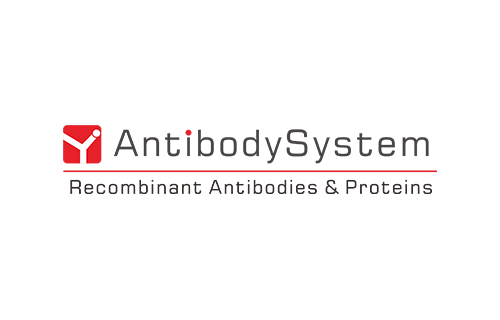KATP and TRPM2-like channels couple metabolic status to resting membrane potential of octopus neurons in the mouse ventral cochlear nucleus., PMID:33581312
Localization of ATP-sensitive K+ channel subunits in rat liver., PMID:31938690
SUR1-TRPM4 channels, not KATP, mediate brain swelling following cerebral ischemia., PMID:31899311
Modulation of Excitability of Stellate Neurons in the Ventral Cochlear Nucleus of Mice by ATP-Sensitive Potassium Channels., PMID:29379989
Targeted next-generation sequencing reveals MODY in up to 6.5% of antibody-negative diabetes cases listed in the Norwegian Childhood Diabetes Registry., PMID:27913849
Altered expression of ATP-sensitive K(+) channels in Hirschsprung's disease., PMID:27001456
Tuning the electrical properties of the heart by differential trafficking of KATP ion channel complexes., PMID:24569881
Opening/blocking actions of pyruvate kinase antibodies on neuronal and muscular KATP channels., PMID:22967932
KATP channels in mesenchymal stromal stem cells: strong up-regulation of Kir6.2 subunits upon osteogenic differentiation., PMID:21820692
The KATP channel Kir6.2 subunit content is higher in glycolytic than oxidative skeletal muscle fibers., PMID:21715697
Different localization of ATP sensitive K+ channel subunits in rat testis., PMID:21328565
Effect of potassium channel opener pinacidil on the contractions elicited electrically or by noradrenaline in the human radial artery., PMID:21236249
Human oocytes express ATP-sensitive K(+) channels., PMID:20847183
Endoplasmic reticulum accumulation of Kir6.2 without activation of ER stress response in islet cells from adult Sur1 knockout mice., PMID:20383647
Role for SUR2A in coupling cardiac K(ATP) channels to caveolin-3., PMID:20332621
The KATP channel is a molecular sensor of atrophy in skeletal muscle., PMID:20064856
Immunolocalization of mitoKATP subunits in human osteoblast-like cells., PMID:20036918
Glucose deprivation regulates KATP channel trafficking via AMP-activated protein kinase in pancreatic beta-cells., PMID:19720793
Angiotensin II and tumour necrosis factor alpha as mediators of ATP-dependent potassium channel remodelling in post-infarction heart failure., PMID:19460779
ATP-sensitive potassium currents in rat primary afferent neurons: biophysical, pharmacological properties, and alterations by painful nerve injury., PMID:19422886
Mutations in the ABCC8 gene can cause autoantibody-negative insulin-dependent diabetes., PMID:19342262
Mutations in the ABCC8 (SUR1 subunit of the K(ATP) channel) gene are associated with a variable clinical phenotype., PMID:19021632
Differential structure of atrial and ventricular KATP: atrial KATP channels require SUR1., PMID:18974387
Novel de novo mutation in sulfonylurea receptor 1 presenting as hyperinsulinism in infancy followed by overt diabetes in early adolescence., PMID:18390792
Localization of the sulphonylurea receptor subunits, SUR2A and SUR2B, in rat renal tubular epithelium., PMID:18323694
Neonatal diabetes: genetic implications in treatment., PMID:22967881
KATP channel-deficient pancreatic beta-cells are streptozotocin resistant because of lower GLUT2 activity., PMID:18042662
Cardiac sulfonylurea receptor short form-based channels confer a glibenclamide-insensitive KATP activity., PMID:18001767
Low levels of glucose transporters and K+ATP channels in human pancreatic beta cells early in development., PMID:17380317
Kir6.2-containing ATP-sensitive potassium channels protect cortical neurons from ischemic/anoxic injury in vitro and in vivo., PMID:17175112
Identification of two types of ATP-sensitive K+ channels in rat ventricular myocytes., PMID:17097686
Evidence for functional ATP-sensitive (K(ATP)) potassium channels in human and equine articular chondrocytes., PMID:16891130
Cerebral glucose transporters expression and spatial learning in the K-ATP Kir6.2(-/-) knockout mice., PMID:16797737
Generation of insulin-secreting cells from human embryonic stem cells., PMID:16759282
The glycolytic enzymes, glyceraldehyde-3-phosphate dehydrogenase, triose-phosphate isomerase, and pyruvate kinase are components of the K(ATP) channel macromolecular complex and regulate its function., PMID:16170200
Glyceraldehyde 3-phosphate dehydrogenase serves as an accessory protein of the cardiac sarcolemmal K(ATP) channel., PMID:16082386
Lack of manifestations of diazoxide/5-hydroxydecanoate-sensitive KATP channel in rat brain nonsynaptosomal mitochondria., PMID:16051627
Severe congenital hyperinsulinism caused by a mutation in the Kir6.2 subunit of the adenosine triphosphate-sensitive potassium channel impairing trafficking and function., PMID:15998776
ATP-sensitive K+-channel subunits on the mitochondria and endoplasmic reticulum of rat cardiomyocytes., PMID:15983113
Hyperinsulinemic hypoglycemia in Beckwith-Wiedemann syndrome due to defects in the function of pancreatic beta-cell adenosine triphosphate-sensitive potassium channels., PMID:15811927
Pore-forming subunits of K-ATP channels, Kir6.1 and Kir6.2, display prominent differences in regional and cellular distribution in the rat brain., PMID:15739238
K ATP channels of primary human coronary artery endothelial cells consist of a heteromultimeric complex of Kir6.1, Kir6.2, and SUR2B subunits., PMID:15380676
Glucose- and interleukin-1beta-induced beta-cell apoptosis requires Ca2+ influx and extracellular signal-regulated kinase (ERK) 1/2 activation and is prevented by a sulfonylurea receptor 1/inwardly rectifying K+ channel 6.2 (SUR/Kir6.2) selective potassium channel opener in human islets., PMID:15220194
ATP-sensitive K(+) channels regulate the concentrative adenosine transporter CNT2 following activation by A(1) adenosine receptors., PMID:15024061
Heart mitochondria contain functional ATP-dependent K+ channels., PMID:14596790
Molecular assembly and subcellular distribution of ATP-sensitive potassium channel proteins in rat hearts., PMID:14527696
Functional coupling between sulfonylurea receptor type 1 and a nonselective cation channel in reactive astrocytes from adult rat brain., PMID:13679426
Distribution of Kir6.0 and SUR2 ATP-sensitive potassium channel subunits in isolated ventricular myocytes., PMID:12738227
The cytoplasmic C-terminus of the sulfonylurea receptor is important for KATP channel function but is not key for complex assembly or trafficking., PMID:12392564
17Beta-estradiol regulates expression of K(ATP) channels in heart-derived H9c2 cells., PMID:12106946

